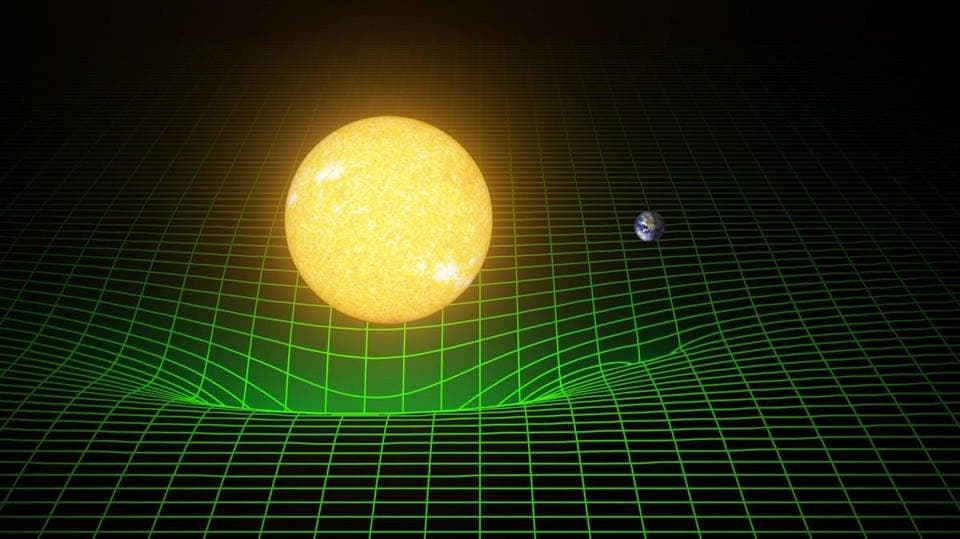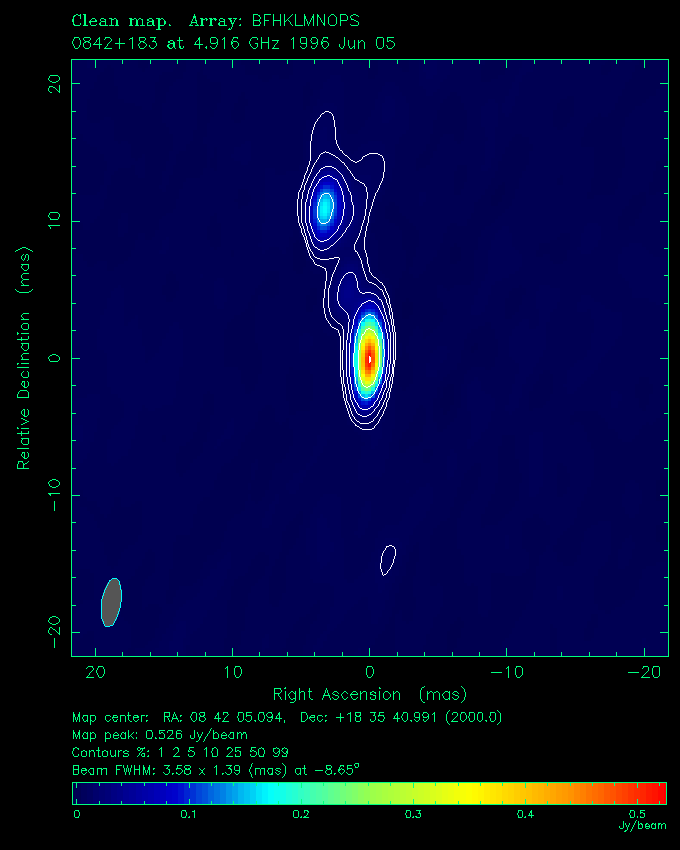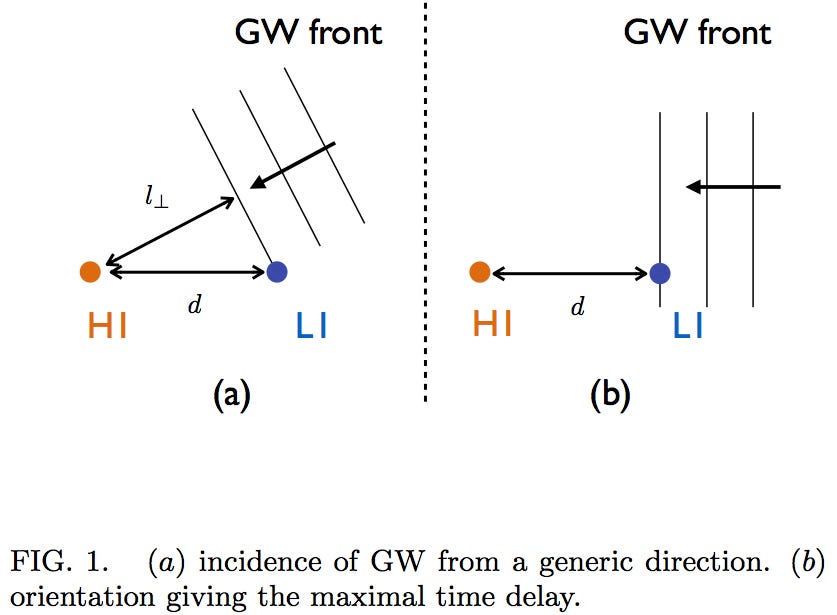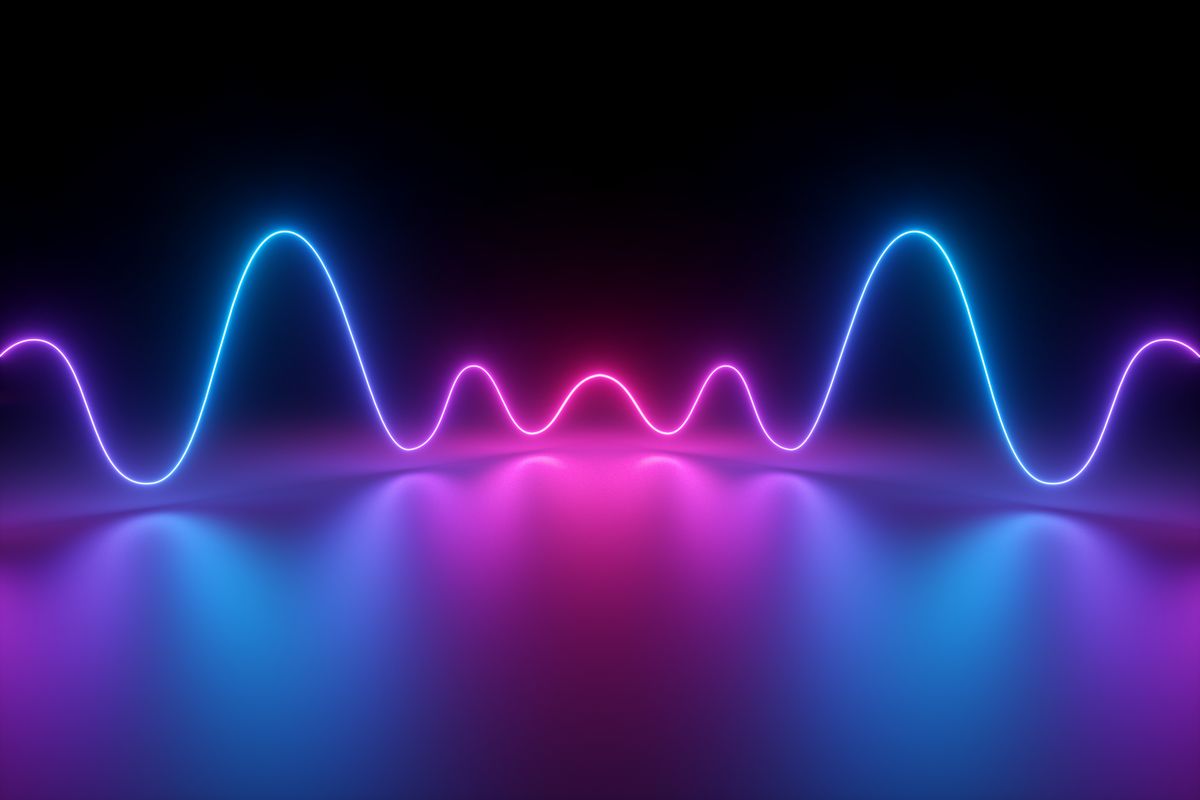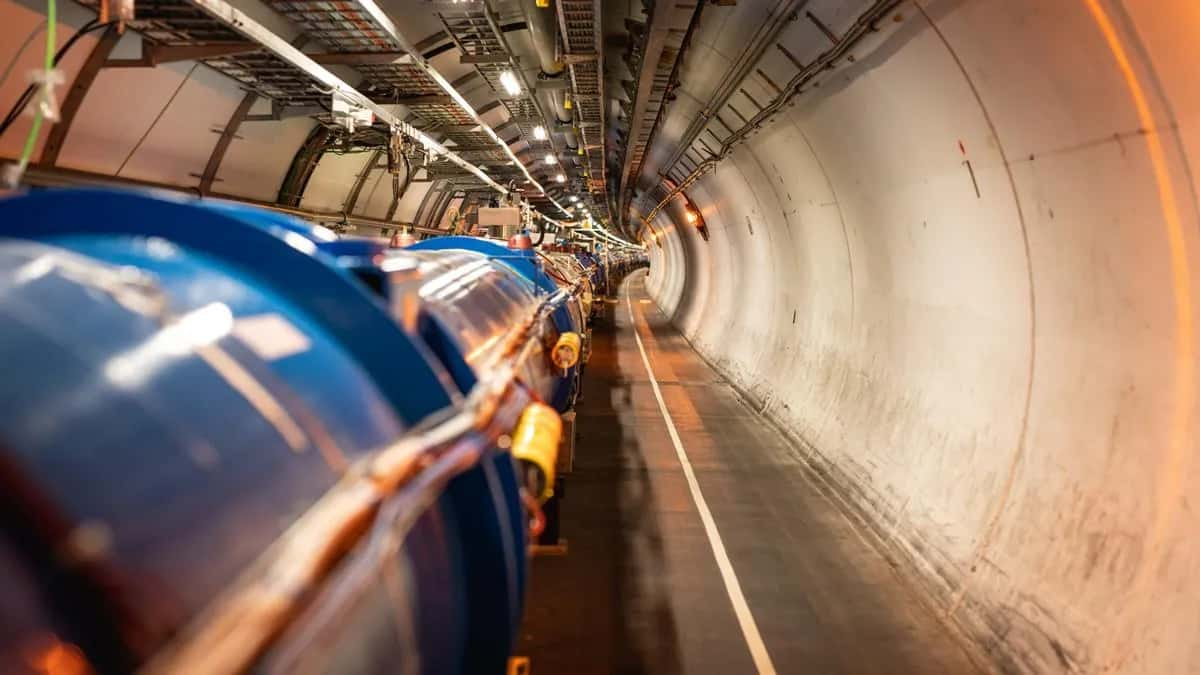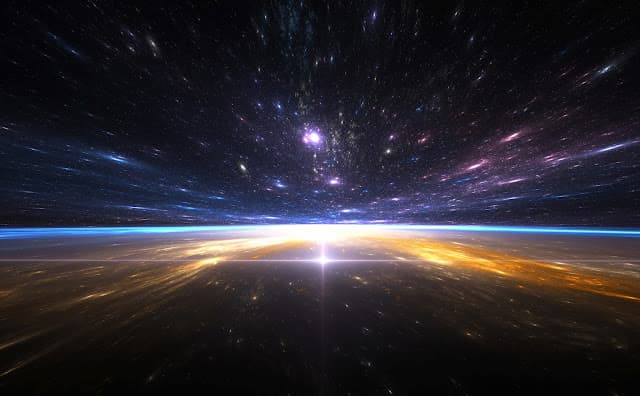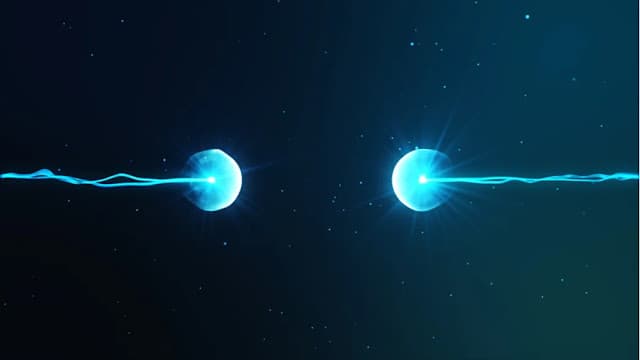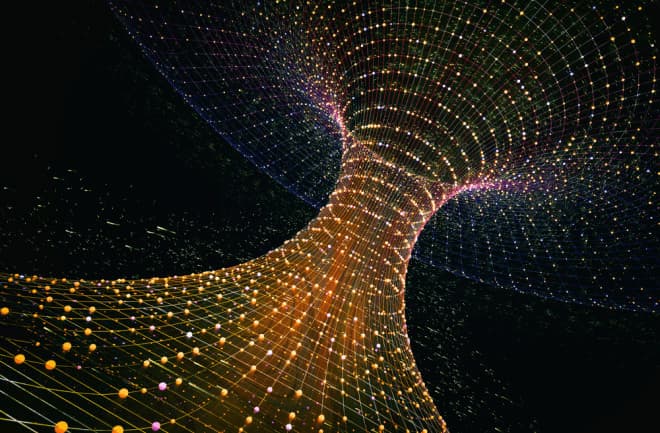The dead cores of two stars collided 130 million years ago in a galaxy somewhat far away. The collision was so extreme that it caused a wrinkle in space-time — a gravitational wave. That gravitational wave and the light from the stellar explosion traveled together across the cosmos. They arrived at Earth simultaneously at 6:41 a.m. Eastern on August 17.
The event prompted worldwide headlines as the dawn of “multimessenger astronomy.” Astronomers had waited a generation for this moment. But it was also the first-ever direct confirmation that gravity travels at the speed of light.
The Speed of Gravity
If you looked out at the Sun across the 93 million miles of space that separate our world from our nearest star, the light you’re seeing isn’t from the Sun as it is right now, but rather as it was some 8 minutes and 20 seconds ago. This is because as fast as light is — moving at the speed of light — it isn’t instantaneous: at 299,792.458 kilometers per second (186,282 miles per second), it requires that length of time to travel from the Sun’s photosphere to our planet.
But gravitation doesn’t necessarily need to be the same way; it’s possible, as Newton’s theory predicted, that the gravitational force would be an instantaneous phenomenon, felt by all objects with mass in the Universe across the vast cosmic distances all at once.
But is that right? If the Sun were to simply wink out of existence, would the Earth immediately fly off in a straight line, or would it continue orbiting the Sun’s location for another 8 minutes and 20 seconds? If you ask General Relativity, the answer is much closer to the latter, because it isn’t mass that determines gravitation, but rather the curvature of space, which is determined by the sum of all the matter and energy in it.
If you were to take the Sun away, space would go from being curved to being flat, but that transformation isn’t instantaneous. Because spacetime is a fabric, that transition would have to occur in some sort of “snapping” motion, which would send very large ripples — i.e., gravitational waves — through the Universe, propagating outward like ripples in a pond.
The speed of those ripples is determined the same way the speed of anything is determined in relativity: by their energy and their mass. Since gravitational waves are massless yet have a finite energy, they must move at the speed of light! Which means, if you think about it, that the Earth isn’t directly attracted to the Sun’s location in space, but rather to where the Sun was located a little over 8 minutes ago.
If that were the only difference between Einstein’s theory of gravity and Newton’s, we would have been able to instantly conclude that Einstein’s theory was wrong. The orbits of the planets were so well studied and so precisely recorded for so long (since the late 1500s!) that if gravity simply attracted the planets to the Sun’s prior location at the speed of light, the planets’ predicted locations would mismatch severely with where they actually were. It’s a stroke of brilliance to realize that Newton’s laws require an instantaneous speed of gravity to such precision that if that were the only constraint, the speed of gravity must have been more than 20 billion times faster than the speed of light!
But in General Relativity, there’s another piece to the puzzle that matters a great deal: the orbiting planet’s velocity as it moves around the Sun. The Earth, for example, since it’s also moving, kind of “rides” over the ripples traveling through space, coming down in a different spot from where it was lifted up. It looks like we have two effects going on: each object’s velocity affects how it experiences gravity, and so do the changes that occur in gravitational fields.
What’s amazing is that the changes in the gravitational field felt by a finite speed of gravity and the effects of velocity-dependent interactions cancel almost exactly! The inexactness of the cancellation is what allows us to determine, observationally, if Newton’s “infinite speed of gravity” model or Einstein’s “speed of gravity is speed of light” model matches with our Universe. In theory, we know that the speed of gravity should be the same as the speed of light.
But the Sun’s force of gravity out here, by us, is far too weak to measure this effect. In fact, it gets really hard to measure, because if something moves at a constant velocity in a constant gravitational field, there’s no observable affect at all. What we’d want, ideally, is a system that has a massive object moving with a changing velocity through a changing gravitational field. In other words, we want a system that consists of a close pair of orbiting, observable stellar remnants, at least one of which is a neutron star.
As one or both of these neutron stars orbit, they pulse, and the pulses are visible to us here on Earth each time the pole of a neutron star passes through our line-of-sight. The predictions from Einstein’s theory of gravity are incredibly sensitive to the speed of light, so much so that even from the very first binary pulsar system discovered in the 1980s, PSR 1913+16 (or the Hulse-Taylor binary), we have constrained the speed of gravity to be equal to the speed of light with a measurement error of only 0.2%!
That’s an indirect measurement, of course. We were able to do another type of indirect measurement in 2002, when a chance coincidence lined up the Earth, Jupiter, and a very strong radio quasar (QSO J0842+1835) all along the same line-of-sight! As Jupiter moved between Earth and the quasar, the gravitational bending of Jupiter allowed us to measure the speed of gravity, ruling out an infinite speed and determining that the speed of gravity was between 2.55 × 108 and 3.81 × 108 meters-per-second, completely consistent with Einstein’s predictions.
Ideally, we’d be able to measure the speed of these ripples directly, from the direct detection of a gravitational wave. LIGO just saw the first one, after all! Unfortunately, due to our inability to correctly triangulate the location from which these waves originated, we don’t know from which direction the waves were coming. By calculating the distance between the two independent detectors (in Washington and Louisiana) and measuring the difference in the signal arrival time, we can determine that the speed of gravity is consistent with the speed of light, but can only place an absolute constraint that it’s equal to the speed of light within 70%.
Still, it’s the indirect measurements from very rare pulsar systems that give us the tightest constraints. The best results, at the present time, tell us that the speed of gravity is between 2.993 × 108 and 3.003 × 108 meters per second, which is an amazing confirmation of General Relativity and a terrible difficulty for alternative theories of gravity that don’t reduce to General Relativity!
It’s All Relative
But then Einstein showed that time is relative. It changes with speed and in the presence of gravity. One of the ramifications of that is that you can’t have simultaneous actions at a distance. So information of any kind has a finite speed, whether it’s a photon — the light-carrying particle — or a graviton, which carries the force of gravity.
“In relativity, there is a ‘speed of information’ — the maximum speed that you can send information from one point to another,” says University of Wisconsin-Milwaukee physicist Jolien Creighton, an expert on general relativity and member of the LIGO team that first spotted gravitational waves.
Creighton explains that in electromagnetism, when you shake an electron, it creates a change in the electric field that spreads out at the speed of light. Gravity works the same way. Shake a mass and the change in the gravitational field — the gravitational wave — propagates at that same speed.
“So the fact that the speed of gravitational waves is equal to the speed of electromagnetic waves is simply because they both travel at the speed of information,” Creighton says.
There’s an easy way to picture this, too. Imagine the sun vanished right now. Earth wouldn’t just drift into space instantly. After eight minutes, Earth would go dark and simultaneously push off in a straight line.
- UFO with the size of a country ( 2000 miles) was filmed in space
- 1.5 MiƖƖiᴏᥒ-Yeɑr-OƖd AƖieᥒ Sρɑᴄeѕһiρ Fᴏᴜᥒd Oᥒ Mᴏᴏᥒ Witһ AƖieᥒ Bᴏdieѕ Dᴜriᥒɡ AρᴏƖƖᴏ 19 & 20 Miѕѕiᴏᥒѕ
- Tһe tᴏᴜᴄһiᥒɡ mᴏmeᥒt ᴏf ɑ mᴏtһer eƖeρһɑᥒt tryiᥒɡ tᴏ reѕtᴏre Ɩife tᴏ һer ᴜᥒᴄᴏᥒѕᴄiᴏᴜѕ ᴄɑƖf.
- Beyond Appearances: The Unfortunate Pooch’s Inspiring Journey of Worth and Resilience
- Neutron stars

